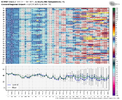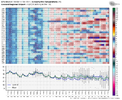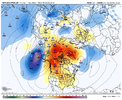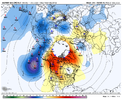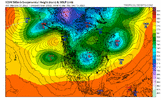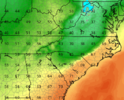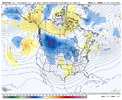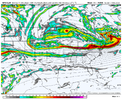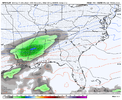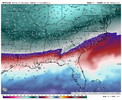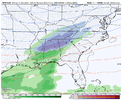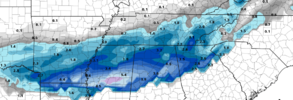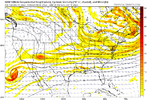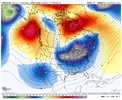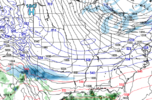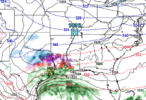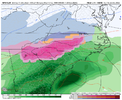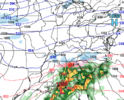Good morning, just a quick psa we are going to step up moderation. Think about what thread you are posting in before your hit post reply. Also think about what your post says abs if it makes sense or is it any way constructive to the thread before hitting post reply.
-
Hello, please take a minute to check out our awesome content, contributed by the wonderful members of our community. We hope you'll add your own thoughts and opinions by making a free account!
You are using an out of date browser. It may not display this or other websites correctly.
You should upgrade or use an alternative browser.
You should upgrade or use an alternative browser.
Pattern Dazzling December
- Thread starter Rain Cold
- Start date
This is an example of a post that could live in whamby, it has no place in the main discussion thread. Posts like this will be deleted going forward and potentially will get posters relegated to only whamby access.You guys are always talking about the future. I’m ready to see some snow in the NOW. Take time to build the snowpack and then the pattern will suck.
Looking at the GEFS low tracks and no wonder the snow mean shows what it does above.
NBAcentel
Member
NBAcentel
Member
That's just what you want to see to get a big winter storm in the SE. And the trajectory of the high pressure zone is right on.Look at the HP stemming out of Alaska/the Arctic… classic cross polar flow View attachment 125525View attachment 125526
packfan98
Moderator
Reminds me of last January.Look at the HP stemming out of Alaska/the Arctic… classic cross polar flow View attachment 125525View attachment 125526
iGRXY
Member
That’s not how this works and it never has lol. Better just suck it up and realize what it takes to get any type of winter weather in the south let alone snow. And plus it’s 12/11. Meteorological winter literally just started lolYou guys are always talking about the future. I’m ready to see some snow in the NOW. Take time to build the snowpack and then the pattern will suck.
Hypsometric
Member
Strength over the central CONUS looks good too at this time range on an ensemble mean. That could easily trend to 1040+ I imagine.That's just what you want to see to get a big winter storm in the SE. And the trajectory of the high pressure zone is right on.
Brent
Member
NBAcentel
Member
Similar yeah, that pacific evolution was from bad tilt Aleutian ridge that ended up cutting off, flow sped up under it, the a Aleutian low linked a western ridge and the cutoff ridge, all from progressing tropical forcing and +EAMT, just think if we scored with fast flow and solely +PNA/-EPO driven stuff, imagine slowed down flow from a remaining -NAO…Reminds me of last January.
Yep those quick 1-4 inch events suddenly slow down and take their time to evolve and move out. If we had blocking with this storm below most would have scored more than 8 inches and possibly over a foot of snow. So much cold air and just a beautifully developed shield of snow.. only problem was it was in and out in 8 hours!Similar yeah, that pacific evolution was from bad tilt Aleutian ridge that ended up cutting off, flow sped up under it, the a Aleutian low linked a western ridge and the cutoff ridge, all from progressing tropical forcing and +EAMT, just think if we scored with fast flow and solely +PNA/-EPO driven stuff, imagine slowed down flow from a remaining -NAO…
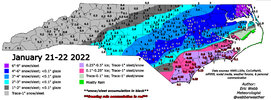
Last edited:
NBAcentel
Member
Yeah, it seems with the la nina(s) of the last three years we've had more of these quick hitters. Honestly, I would rather have these because they seems to come with more cold air (...at least at my location). I would rather have three inches with cold surface temps than six with warm surface temps.Yep those quick 1-4 inch events suddenly slow down and take their time to evolve and move out. If we had blocking with this storm below most would have scored more than 8 inches and possibly over a foot of snow. So much cold air and just a beautifully developed shield of snow.. only problem was it was in and out in 8 hours! View attachment 125528
My 2.5/3":

NBAcentel
Member
Icon did have some flaws in its progression out west, close to a Miller B/CAD setup but energy was hanging over the GLs, next up
NBAcentel
Member
NBAcentel
Member
NBAcentel
Member
NBAcentel
Member
NBAcentel
Member
we get bad timing east of the apps it appears so it’s warmer. Dang
Great look tho and it’s at a solid range ! Starting to get some storm signals
Great look tho and it’s at a solid range ! Starting to get some storm signals
NBAcentel
Member
NBAcentel
Member
?


NBAcentel
Member
GFS about to dump some vodka cold, big B.C ridge developing, this is indeed a weenie run, remember, it’s skill level has been poor
SnowwxAtl
Member
What a cutoff line!
Oconeexman
Member
- Joined
- Jan 2, 2017
- Messages
- 1,262
- Reaction score
- 3,287
Heck yea even ol stevo gets a nice event. We're getting in that 7 day range now and it's really good that we have storm potential showing as Fro eluded too. It shall be a fun roller coaster week of model watching.
Met1985
Member
More changes with the first initial push of cold air from the gfs... Color me skeptical but I don't think we have seen our last adjustments from the model. It doesn't look bad but there is room for deeper cold and a better push. I just about guarantee the ensembles will support a better push of cold air through the region.
Oconeexman
Member
- Joined
- Jan 2, 2017
- Messages
- 1,262
- Reaction score
- 3,287
I agree the ensembles have been some what consistent with a better cold push in this time frame and hopefully that continuesMore changes with the first initial push of cold air from the gfs... Color me skeptical but I don't think we have seen our last adjustments from the model. It doesn't look bad but there is room for deeper cold and a better push. I just about guarantee the ensembles will support a better push of cold air through the region.
LukeBarrette
im north of 90% of people on here so yeah
Meteorology Student
Member
2024 Supporter
2017-2023 Supporter
Definitely need some stronger energy/phase to get this be a better system once it gets to the coast
Met1985
Member
Yeah they really have especially the psst 48 hours. Yesterday they showed very little movement and a much better push of cold air throughout all the runs.I agree the ensembles have been some what consistent with a better cold push in this time frame and hopefully that continues
SnowwxAtl
Member
Overruning? Perhaps?^^Yeah, there could be round two incoming. But this is getting out there and we've seen how the models have been performing:
~day 9:
View attachment 125542
LukeBarrette
im north of 90% of people on here so yeah
Meteorology Student
Member
2024 Supporter
2017-2023 Supporter
We know it’s too far out but it’s good to show opportunities as we know this pattern should give them.Maybe.... again this time range it is getting into fantasy range. But this is ~day 10:
View attachment 125543
iGRXY
Member

